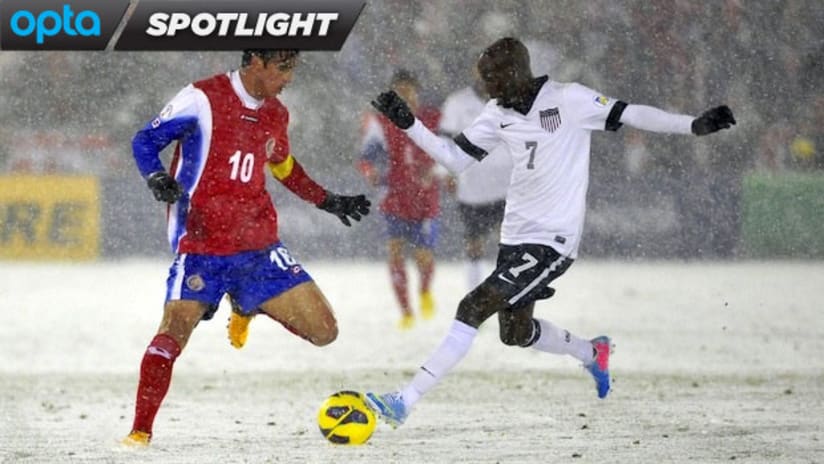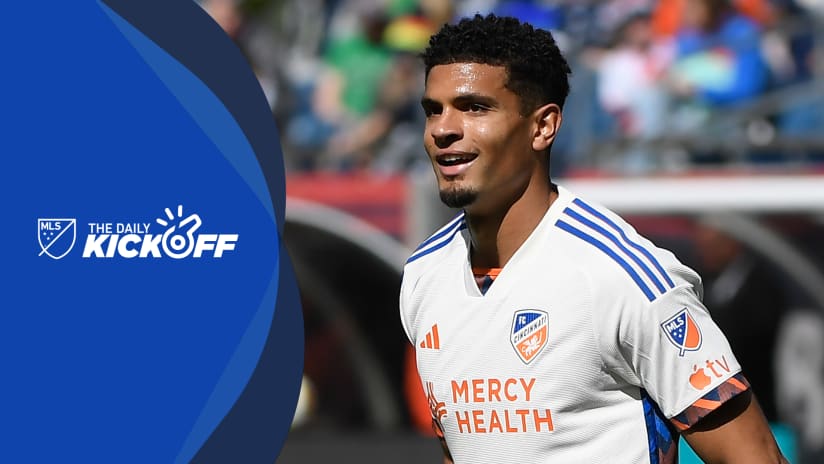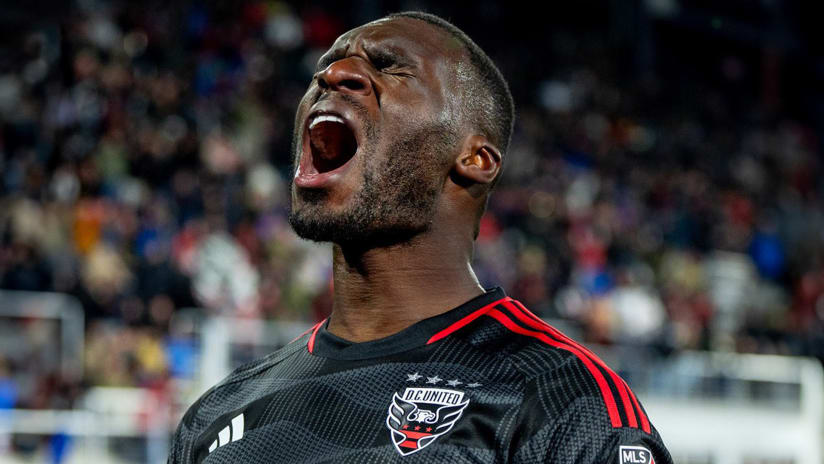It was an experiment destined for failure, the critics said, an emergency stopgap who would create more holes in the US backline than he could fill.
Turns out, the critics were wrong.
On a snowy, wind-swept Friday night at Dick’s Sporting Goods Park, DaMarcus Beasley spent 90 bone-chilling minutes forcing observers to reexamine why it was they thought his inclusion in Jurgen Klinsmann’s XI was a sign of weakness – as well as calling his stopgap status at left back into question.
“You look at DaMarcus Beasley,” Klinsmann said of the player who’s yo-yoed in and out of his roster over the past 20 months. “It looked like he grew up in the snow.”
READ: Beasley rises to the challenge in unfamiliar left back spot for USMNT
That’s not quite true – Beasley’s hometown of Fort Wayne, Ind., averages a little more than 30 inches of snowfall per year and one storm of six-plus inches – but the veteran left-sider certainly looked right at home, a notion the statistics from the match support wholeheartedly.
Beasley led both teams in completed passes with 58, while the US’ next closest player was Michael Bradley with 41. Costa Rica’s most prolific passers were Roy Miller and Michael Barrantes, who each completed 31 attempts.
Even more impressive than the sheer volume of passes completed on a pitch most deemed unsuitable for playing soccer was the fact that Beasley managed to connect with his teammates from 18-yard box to 18-yard box. No small feat, all things considered.
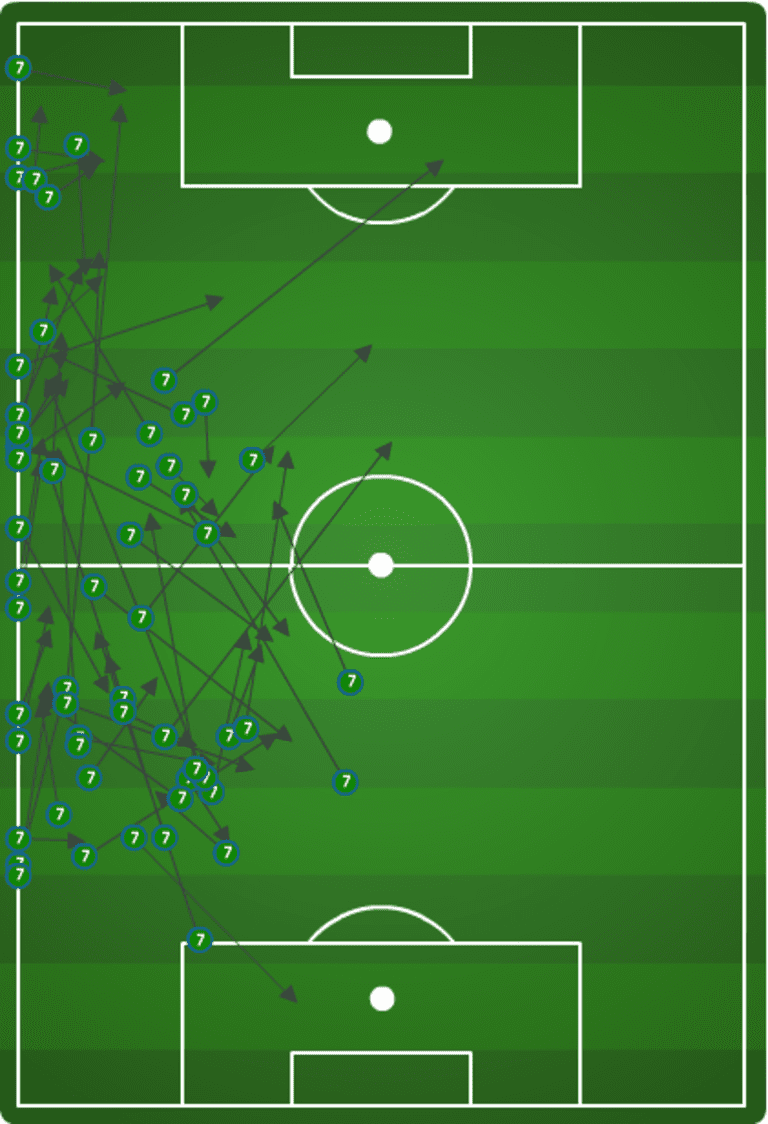
Of course, Beasley also recorded the second-most unsuccessful passes (21) on the night, behind only Geoff Cameron. However, that’s a misleading stat considering the US outside backs often had no choice – and no better option – to clear the ball up field and out of danger.
#MEXvUSA: Everything you need to know about Tuesday's WCQ | 10 pm ET, ESPN and Univision
The graphic below shows Beasley (left) and Cameron’s (right) unsuccessful attempts against Costa Rica. And although the duo were only credited with five clearances between them, notice that both charts show that many of those passes originated in their own half and travel a significant distance, part clearance and part attempt to shift the pressure onto their Central American visitors.
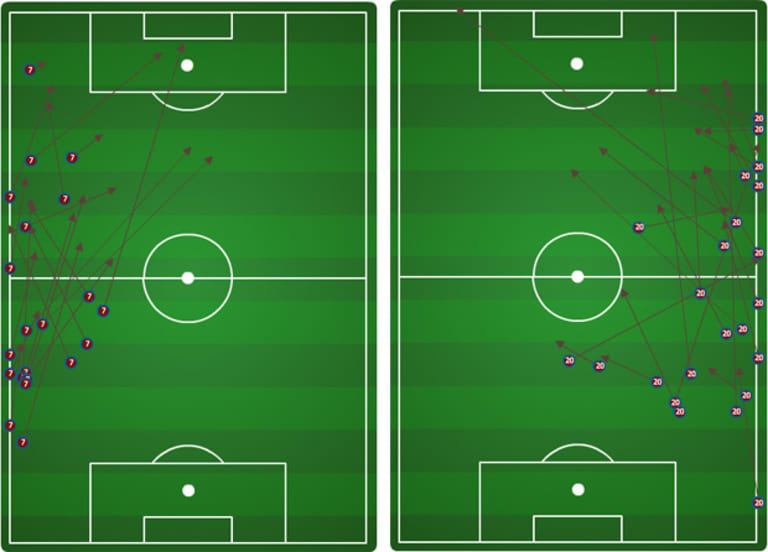
So while Beasley may not have grown up in the snow – technicalities, Jurgen, technicalities – he certainly adapted quickly to the Rocky Mountain conditions in Commerce City, perhaps better than any other player on the field.
But part of the reason for that was that the ball was simply in Beasley’s vicinity at a higher frequency – for good reason, it seems – an observation backed up by the difference in touches and actions performed on the left side of the US formation compared to the right.
SmorgasBorg: Why the USMNT should play with five defenders vs. Mexico
As you can see in the graphic below, which displays passes and crosses completed, Beasley and his partner on the left, Herculez Gomez, were far more active than Geoff Cameron, Graham Zusi and Eddie Johnson on the right.
Numerically speaking, Beasley and Gomez completed 91 passes (nearly a fourth of the US’ total as a team) to their right-sided counterparts’ 45 and were much more likely to combine to push the ball forward rather than settle for a outlet (and a potentially dangerous pass) in the center of the field.
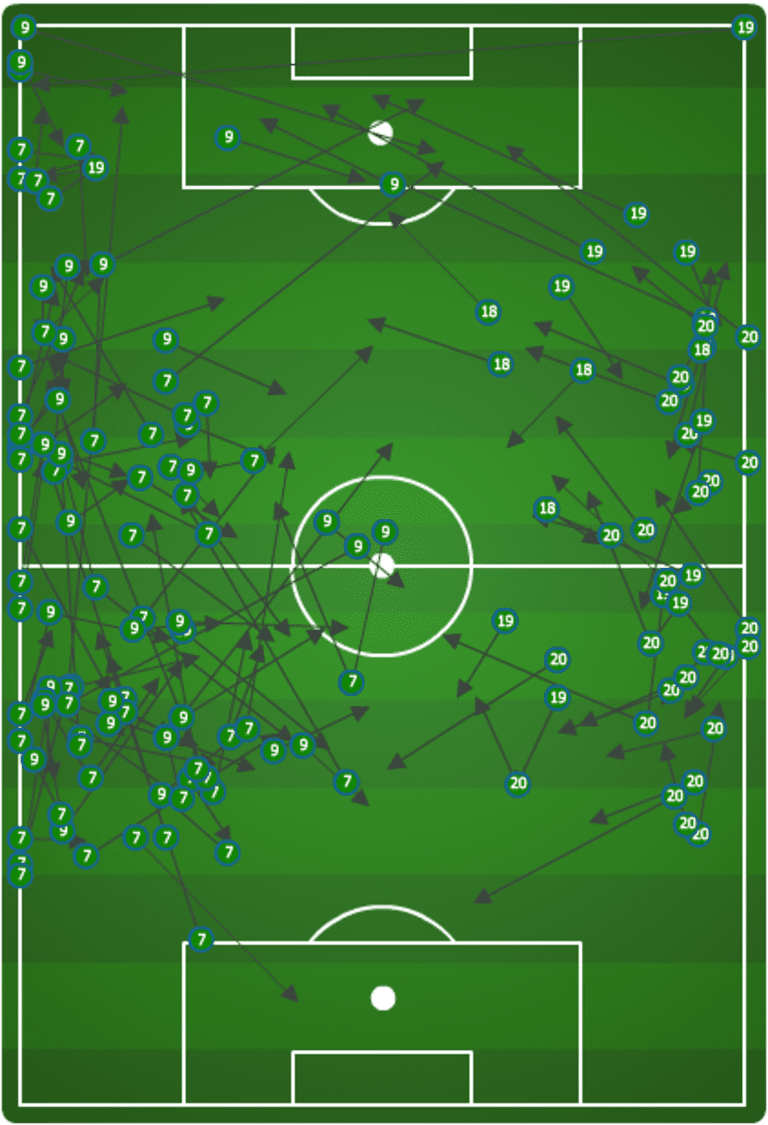
Now, does all this mean Beasley is a shoo-in on Tuesday when the US attempt to tame the beast that is El Tri in Estadio Azteca?
Of course not. Clearly, standing snow skews the results, an anomaly that won’t repeat itself in Mexico City.
But it does suggest is that there’s something to the backline Klinsmann trotted out last Friday and, consequently, Beasley’s place in the US team. Now, will he back that up in Azteca? That remains to be seen.

